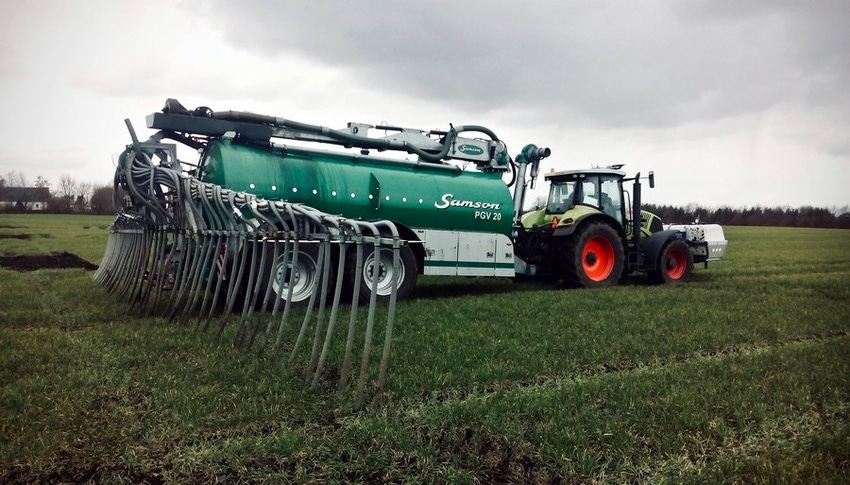Slurry sensor to make manure management more precise
Aarhus researchers help develop sensor to measure nutrient content in manure using nuclear magnetic resonance technology.
November 22, 2019

In collaboration with sensor firm NanoNord, researchers from the Aarhus University department of engineering and iNANO in Denmark have developed a sensor that Europe's largest slurry tank manufacturer, Samson Agro, has incorporated into its slurry tankers.
According to Aarhus, the sensor makes it possible for farmers to measure the nutrient content in the manure slurry directly in the slurry tankers.
This is important for the future of global agriculture, because it is a major step on the way towards the sustainable precision agriculture of the future, where the goal is maximum yield and minimal leaching — i.e., using the exact amount of fertilizer required and no more, Aarhus said.
"Today, farmers fertilize their fields on the basis of previous analyses or standard figures, but these often don't reflect reality. Given [Denmark's] goal of targeted regulation at farm level rather than at national level, it’s crucial for farmers to know in real time precisely how much nitrogen, phosphorus and potassium (NPK) they’re spreading as slurry on their fields. They don’t necessarily know this, because there’s simply no valid and well-tested technology — until now," said Tavs Nyord, senior adviser from the Aarhus department of engineering.
The new sensor is the culmination of several years of technological development, and it uses multi-frequency magnetic resonance technology to measure the concentration of NPK directly from the slurry tanker and in real time, the announcement said.
"We’ve developed a very robust sensor that provides direct measurement of the concentration of slurry components, so there’s no need for continuous calibrations," said Morten K. Sørensen, a business postdoc at NanoNord and Aarhus University (department of engineering and iNANO) who has been leading the development of the sensor together with NanoNord.
He added that the sensor is based on essentially the same method as magnetic resonance imaging scanners at hospitals but "much smaller, cheaper and more robust."
Practical tests in 2020
The new revolutionary technology allows for unprecedented efficiency in measuring many different atomic components outside the laboratory, the university said. This is the first time that nuclear magnetic resonance (NMR) technology has been used in the agricultural sector, but a great future is predicted for the technology, Aarhus said.
The manure sensor itself has been well tested, but the sampling system is still under development.
"We've been doing lab tests with the NanoNord sensor and sampling system for a long time now, and we can say that it works. In 2020, we’ll be doing practical on-site tests with the Samson's slurry tanker at Aarhus University's experimental farm in Foulum, from where we hope Samson will be able to take the user experience and implement the technology in Danish and European agriculture," Nyord said.
Aarhus University's contribution to the development of the new technology is primarily being financed by the Lauritzen Foundation, the Danish Agricultural Agency (as part of the Grønt Udviklings- og Demonstrationsprogram business support scheme) and, most recently, the Central Denmark Region's research and development program Industri 4.0. Innovation Fund Denmark is supporting the process of disseminating the sensor technology to an even wider range of uses.
You May Also Like



